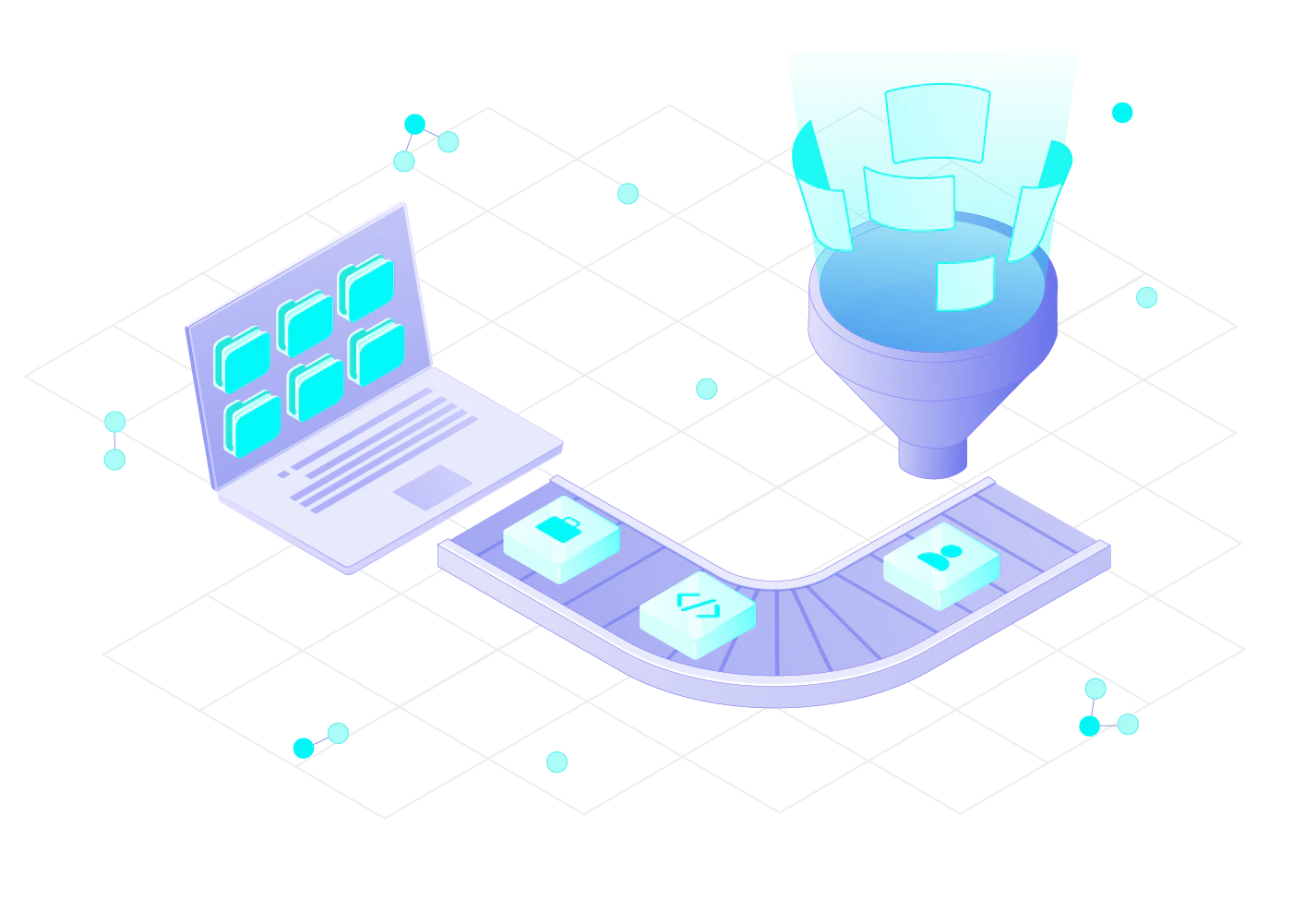Data analytics can enhance the success of every business department, and recruitment is certainly no exception. With the help of big data, HR practices can take a leap forward toward efficient, modern hiring solutions.
Here, we will examine how to use big data for recruitment, labor market trends research, and other crucial HR processes. Below, you will find the benefits of implementing big data in HR, along with 5 strong use cases that are bound to produce outstanding results.
Big data for HR and recruitment
For recruitment and HR in general, big data means utilizing large volumes of data for all sorts of daily tasks. It offers a more precise, unbiased, and efficient hiring process.
Below, we explore 4 key benefits and methods of integrating big data into HR and recruitment strategies.
1. Enhancing candidate selection and reducing bias
Big data's primary advantage in recruitment is its capability to quickly and effectively compare candidates, helping HR professionals identify the best talents from a wider pool. This technology reduces biases in hiring by focusing on data-driven evaluations, ensuring candidates are selected based on their skills and fit for the role rather than subjective impressions.
2. Streamlining recruitment processes
By utilizing predictive analytics, big data speeds up the recruitment process and predicts future hiring needs. This allows HR to keep a pipeline of qualified candidates ready, improving strategic planning and reducing the time and resources spent on finding the right candidate.
3. Building comprehensive candidate profiles
Big data goes beyond resumes to provide a complete picture of the candidates through their online activity, personal interactions, and more. This comprehensive profiling aids recruiters in making informed decisions quickly, ensuring a good match for the company's needs.
4. Utilizing data-driven insights
Effective recruitment today depends on sophisticated data analysis tools that enhance decision-making. Recruiters use these tools to sift through job posting datasets to identify potential candidates, taking into account not only their qualifications but also metrics like communication patterns and professional demeanor.
Generally, all aspects of HR can be improved with big data as it allows for unbiased decisions grounded in facts and historical experience.
Additionally, big data enables talent analytics, which, in turn, allows for identifying patterns and predicting various human resource management scenarios that allow for informed strategic decision-making.
Most beneficial data types for recruitment and HR
Utilizing big data, HR can make use of various employee data types that directly or indirectly relate to talent analytics and labor market trends. The following data types tend to produce the most beneficial results.
- Employee satisfaction data received from internal studies as well as external employer reviews
- Online job postings data for competitive intelligence and improving your own job postings
- Demographic data describing general information such as age and education
- Community and repository data that allows you to find the best talent in the IT and tech industry
- Performance data, which will enable you to analyze employee performance and its impact on overall business goals
These and other types of data for recruitment and workforce planning can steer HR decisions in the right direction.

5 use cases of big data for recruitment
1. Talent sourcing
With big data, HR can perform one of its key functions better – efficiently finding candidates for open positions. Big data allows for sourcing talent at scale, preparing for future hiring bursts, and filling key positions faster.
Using big data for recruitment allows for expanding the candidate pool and informs decisions when the time comes to choose the hire from selected candidates.
2. Labor market research
Constantly researching the labor market is crucial for HR professionals who aim to understand and identify hiring opportunities now and in the future. When a company considers opening a new branch, HR needs to know how competitive its job market is, how long employees tend to stay in particular positions and other employment trends.
Job postings analysis allows HR representatives to track such factors and use predictive analytics to forecast their impact. With such intelligence, HR can better advise top management to ensure efficient hiring cycles.
3. AI recruitment
Tools driven by artificial intelligence (AI) and machine learning (ML) are implemented across various business departments to boost efficiency and solve persistent problems. HR has many such long-standing challenges that AI can help address.
A good example is ensuring that diversity, equality, and inclusion (DEI) goals are met in the hiring process. Although it has been known for quite some time that diverse work environments have a competitive advantage that leads to economic benefits, ensuring DEI remains challenging for many institutions because human decision-makers can be biased against people of a certain race, gender, ethnicity, or looks.
Hiring bias can be unconscious, but it still takes away the opportunity for the employer to hire the most qualified candidate and for the candidate to get a position they could excel at.
AI recruiting can help meet this challenge by removing human bias and efficiently analyzing broad talent pools. Ensuring that AI tools do this task accurately requires a large volume of data for algorithm training and proper automation.
4. Trend analysis
With big data, HR analysts can perform effective trend analysis. Such an analysis allows for drawing valid conclusions about labor market trends and their effects.
Firstly, historical employment data allows a deeper understanding of how employment evolved over time in particular industries. Secondly, data on current hiring tendencies enables analysts to contrast the past with the present.
Trend analysis enhances the understanding of current recruiting conditions, their root causes, and probable persistence. This, in turn, informs strategic planning for hiring needs and company growth.
5. Data-powered HR tech
With big data, HR tech companies build AI-based tools. Additionally, enriching HR data also allows for improving the AI tools that you have already built. Additional data points from reliable sources help train algorithms and make online hiring platforms and other high-tech talent-sourcing solutions more effective.
Data-driven tech solutions are now available for all kinds of HR tasks. With data-powered AI and big data, HR can automate human resource management and keep track of workforce availability.

Where to source big data for HR and recruitment?
The main source of big data for recruitment is the Internet. Public web data from job search sites and professional social media platforms can be collected directly or acquired from reliable data providers.
Besides big data-driven tools, internal sources of HR intelligence should also be utilized. If conducted often enough, employee surveys, candidate and exit interviews, and labor market research can all be sources of large and valuable HR data.
Additionally, there is performance history, salary rate changes, and other employee data to be tracked. Combined, external and internal data allow the creation of unique, relevant, and actionable datasets for improved people analytics.
Conclusion
Using big data for recruitment, people management, training, performance evaluation, and any other HR task can significantly advance business goals. The aforementioned use cases are only the beginning of what big data for HR and recruitment can do. With the development of AI and technological solutions, the future is bright for data-driven human resource management.


































